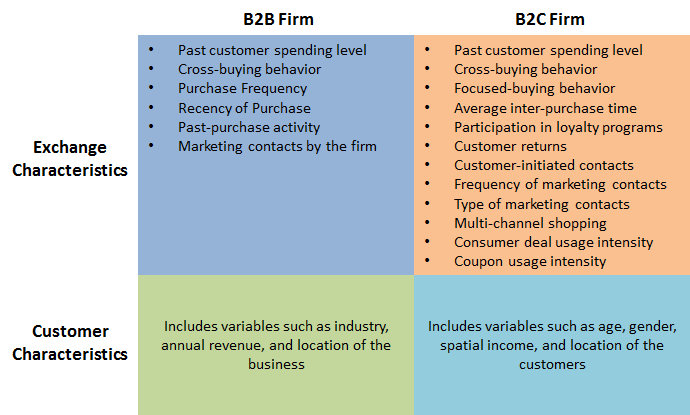ABOUT CUSTOMER LIFETIME VALUE
Typical Drivers of CLV
CLV can serve as an important guide in deciding which customers to target and how to acquire them. It can also guide managers in understanding how their marketing actions influence customer behavior, and in analyzing the effectiveness of their marketing initiatives. For example, if a firm changes its mailing strategy and follows a more selective approach, it can monitor how this particular action affects the CLV of its customers. The change in CLV can give a direct measure of the strategy’s effectiveness, and it can guide firms to make a final decision regarding continuing, abandoning, or modifying this strategy.
In this regard, it is important to understand the factors that drive a profitable relationship with the customer, and how the factors impact the CLV. Understanding this relationship will:
(a) provide the firm with a better understanding of the structure of a profitable customer relationship, and
(b) help managers take proactive measures to maximize a customer’s lifetime value.
The profitable duration of the customer-firm relationship depends, differentially, on the purchase or exchange characteristics at time t and on differences in customer characteristics. Therefore, the exchange characteristics and customer characteristics are the primary driver categories of CLV. Other driver categories include the product characteristics and the firm’s marketing actions. The exchange characteristics are predominately the same for the majority of the cases in business-to-business (B2B) setting (Venkatesan, Rajkumar and V. Kumar (2004)) and business-to-customer (B2C) setting Kumar, V., Denish Shah, and Rajkumar Venkatesan (2006)). However, the drivers that reflect customer characteristics, product characteristics, and a firm’s marketing actions could vary in B2B and B2C settings. The table below provides the classification of these drivers in B2B and B2C settings.
Typical Drivers of CLV in B2B and B2C Settings

References
Venkatesan, Rajkumar and V. Kumar (2004), “A Customer Lifetime Value Framework for Customer Selection and Resource Allocation Strategy,” Journal of Marketing (October), Vol. 68 (4), pp. 106 – 125.
Kumar, V., Denish Shah, and Rajkumar Venkatesan (2006), “Managing Retailer Profitability: One Customer at a time!”, Journal of Retailing, Vol. 82 (4), October, pp. 277 – 294.